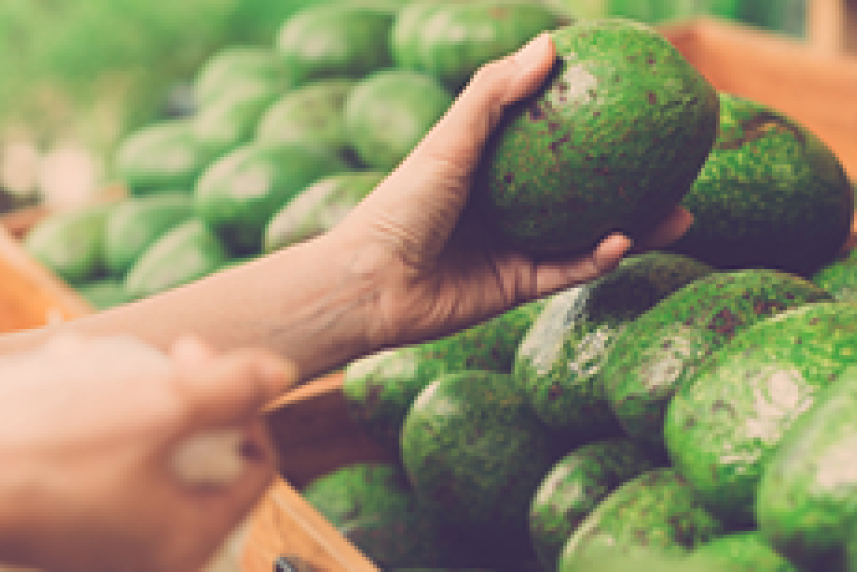The skinny on fat
Getting the right kind of fat—in the right amount—is part of staying healthy

The idea that eating fats will only make you fatter or otherwise harm your health is outdated. In fact, fats are as essential to good health as the vitamins and minerals in your vegetables. “Without fat, you wouldn’t be able to survive,” says Ayla Withee, RD, a Boston-based dietitian. Even saturated fat is needed to be healthy.
From head to toe, fats work hard to keep the body humming. Not only do they store energy, keep you warm, and protect your vital organs, but fats support the immune system to help prevent you from getting sick. They also support your nervous system, reproductive system, and metabolism. Plus, Withee adds, fats make foods tastier and help to keep you full when combined with lean protein and fiber.
Science has shown that what matters is the kind of fat you eat, says Christine Gerbstadt, M.D., RD, author of The Doctor’s Detox Diet. The four major kinds in the foods we eat are saturated, monounsaturated, polyunsaturated, and trans fats, each with different chemical structures and physical properties.
Saturated and trans fats are the ones to watch out for as they are potentially harmful. They raise your bad (LDL) cholesterol and lower your good (HDL) cholesterol levels. “Animal products, particularly meat and dairy that are high in saturated fat and in cholesterol, will raise your cholesterol levels even higher,” Withee says. They also increase your risk for heart disease, stroke, and type 2 diabetes. “This is why it is so important to choose lean meats and low-fat dairy products.” On the flip side, though, the good fats can do the opposite: Monounsaturated and polyunsaturated fats can actually lower levels of bad cholesterol.
How much is enough?
“For most people, total fat intake should come in at around 25 to 30% of your total calories, with less than 10% of that being from saturated fat,” Withee says. For someone who consumes 2,000 calories a day, that would mean eating no more than 65 grams of total fat and less than 20 grams of saturated fat. Keep in mind that the good unsaturated and polyunsaturated fats come primarily from plants—olives, nuts, seeds, avocados, beans, for example—and that most of your fat should come from them. The undesirable saturated and trans fats come mostly from animal sources like whole-fat dairy and meat. When you do have dairy and meat, choose low-fat products and lean cuts. “A reasonable goal is to eat no trans fat, as little as possible of saturated fats, and moderate amounts of mono- and polyunsaturated fats, mostly or all from vegetable sources,” Dr. Gerbstadt says.
Like with fruits and vegetables, variety in your healthy fats is important to get the widest array of benefits. Look for cooking oils made from nuts, seeds, and avocados. They’re often high in omega-3 fatty acids.
“It is important to realize that even though healthy fats are good for your body, you can’t eat an unlimited amount without gaining weight,” she says. “One tablespoon of olive oil has 120 calories, so it adds up quickly. My recommendation is to pair foods that are high in healthy fats with foods that are low in calories but higher in volume, like fruits and vegetables.”
Go for a variety of good fats
Polyunsaturated fats
- Walnuts
- Almond butter
- Pumpkin seeds, flaxseed
- Safflower oil
- Fatty fish
Monounsaturated fats
- Almonds, macadamia nuts
- Peanut butter
- Sesame seeds
- Canola oil
- Avocados
Many foods high in healthy fats are also high in calories, so limit your portions. The American Heart Association recommends keeping your fat intake to three servings per day, one tablespoon apiece.
Vitamin booster
The body needs fat to absorb essential vitamins A, D, K, and E. “Fat is a nutrient booster when paired with foods containing certain vitamins and minerals,” says dietitian Ayla Withee. You’ll get more vitamin A out of your butternut squash if you drizzle a bit of olive oil over it, and more from carrots if you mix them into a salad containing avocado.


